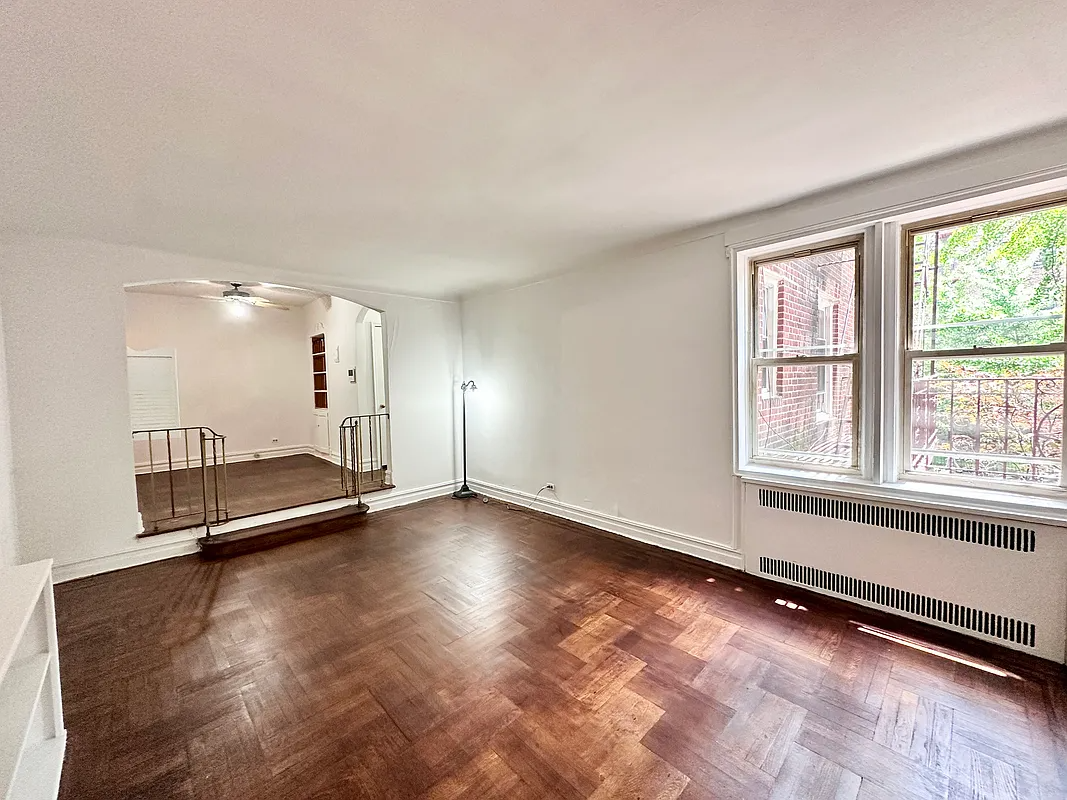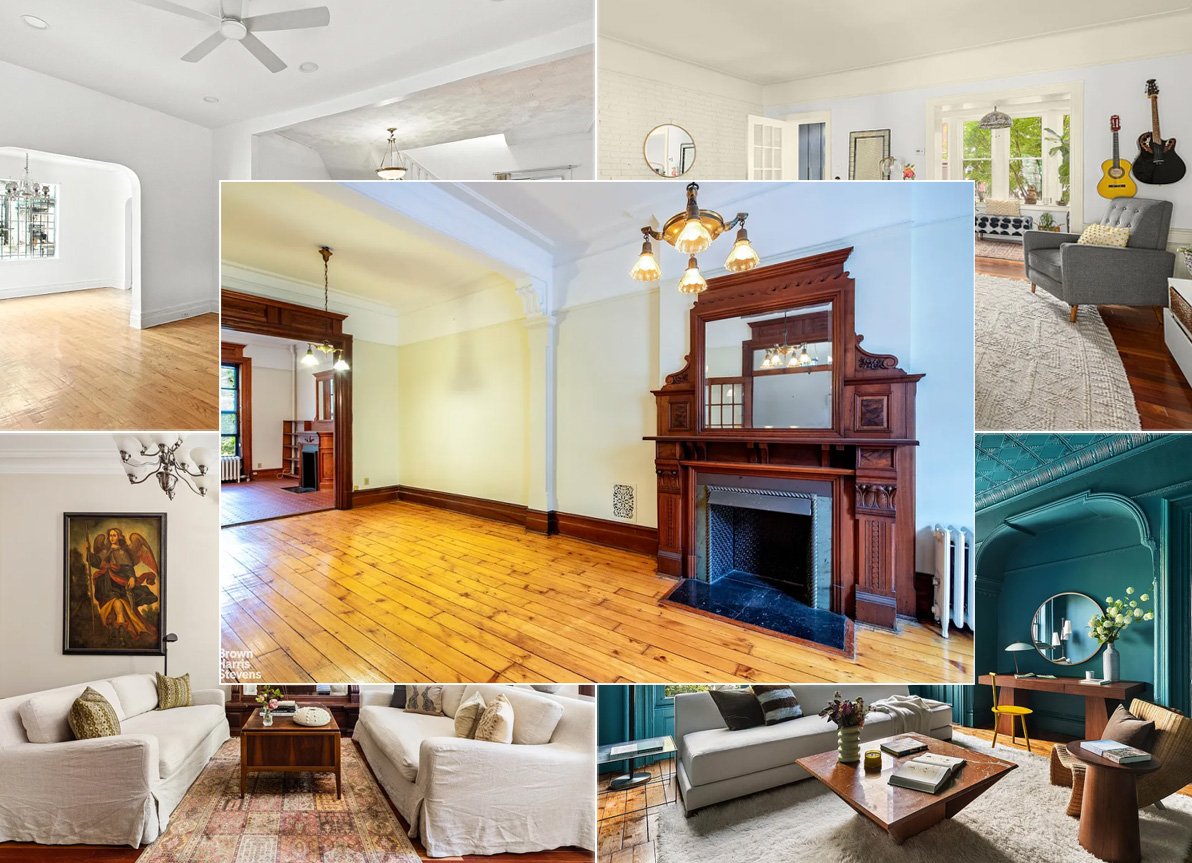Building of the Day: 536-540 Clinton Avenue, Historic Cast-Concrete Beauty
Brooklyn, one building at a time. This row of three Neo-Grec row houses is unique in all of New York City. There used to be four, and they were made of an old material that was making a new comeback in 1870s America. Name: Row houses Address: 536-540 Clinton Avenue Cross Streets: Fulton Street and…
Brooklyn, one building at a time.
This row of three Neo-Grec row houses is unique in all of New York City. There used to be four, and they were made of an old material that was making a new comeback in 1870s America.
Name: Row houses
Address: 536-540 Clinton Avenue
Cross Streets: Fulton Street and Atlantic Avenue
Neighborhood: Clinton Hill
Year Built: 1872
Architectural Style: French Neo-Grec with Second Empire mansard roofs
Architect: A. S. Barnes
Landmarked: No, but really, really should be
Landmark-worthy material
This group of three houses — originally four — were built in 1872 by A. S. Barnes, who is credited for the design. They are basically Neo-Grec in style, with some important differences. Barnes added mansard roofs and two asymmetrical top floor dormers, as well as two-story, three sided bays.
All of the doors and windows are framed with substantial lintels and framed with decorative incised ornament. The cast iron railings on the remaining buildings are original. As can be seen in the illustration below, the houses also once had cast iron cresting on the roof.
If that was all there was to these houses, they’d still be exceedingly fine. The detail work on this group is first rate.
But what makes them special — and should make them landmark-worthy — is the basic building material. These houses are not painted brownstone, sandstone, or limestone. They are made of Béton Coignet cast stone – concrete.
536-542 Clinton Ave, from Beton Coignet, Description of Its Uses… by John C.Goodrich, Jr. 1874
Béton Coignet cast stone
Béton Coignet originated in France. In the US, it was manufactured by the New York and Long Island Coignet Company, founded in 1869. The company’s headquarters and showroom was on the corner of 3rd Avenue and 3rd Street, in Gowanus. This is the landmarked building surrounded by Whole Foods, now in the process of being totally restored to its original façade.
That building was built of Béton Coignet cast stone to show off the material’s possibilities, but many of the buildings that used this stone are either gone, or the records have been forgotten, and they lie among us — unknown.
Cast stone can be made to resemble any kind of stone – marble, limestone, brownstone, and more. The concrete is poured into molds, or slabs can be cut afterwards like stone. The Coignet Company could have turned out hundreds of the ornamental elements used in this group of houses — all made cheaply and quickly.
Photo by Suzanne Spellen
Given how well they’ve held up — they are still almost pristine — it’s too bad cast stone didn’t catch on in Brooklyn. The building boom that took place in the 1880s would have produced wonders out of this stuff.
Alfred Smith Barnes via the Magazine of American History, by J.A. Stevens, et al. 1888
Designed and built by bookish Brooklyner
Alfred Smith Barnes was the developer and builder of these houses. He lived just across the street, about where the parking garage for 525 Clinton stands today.
Barnes was a publisher, and specialized in textbooks and schoolbooks. Because had wide and varied interests, it’s not surprising that he would try Coignet products. Besides, he could see the houses every day when he looked out of his front windows or ventured outside.
The houses were, and remain quite beautiful. Even though the cresting on the roof is gone, the houses retain the rest of their ironwork, as well as the sharp details found on all parts of the façade.
Christopher Bride for PropertyShark
These houses should be landmarked
So does much of the rest of the block, as well — there’s a lot of varied and interesting architecture here. But this remarkable group of cast concrete 1870s houses appear nowhere else in Brooklyn or anywhere else. Let’s protect this rare page of Brooklyn’s history and architecture.
Top photo by Suzanne Spellen. Photos below by Christoper Bride for PropertyShark
Thanks to historic preservationists Frampton Tolbert who told me these were Coignet, solving a longtime mystery for me, and Patrick Ciccone, who confirmed the information.












These buildings are part of a Clinton Hill South Historic District proposed by the neighborhood preservation organization about ten years ago. Sadly, there has been on action at LPC on this proposal. Perhaps it is time to renew the effort.
Beautiful!